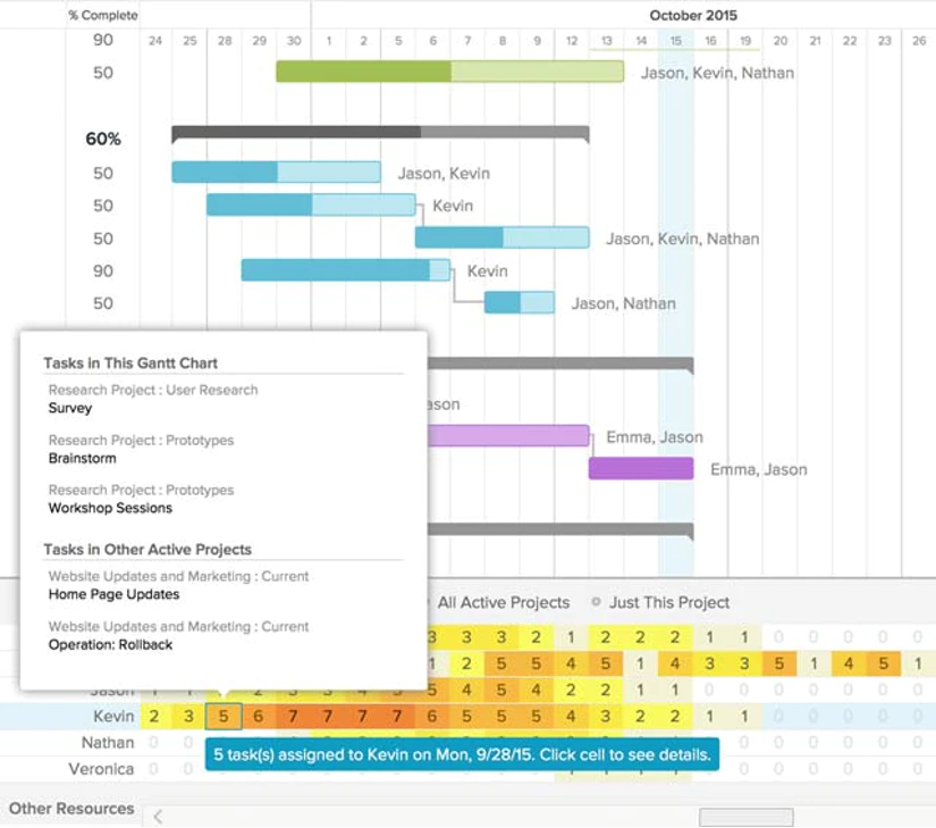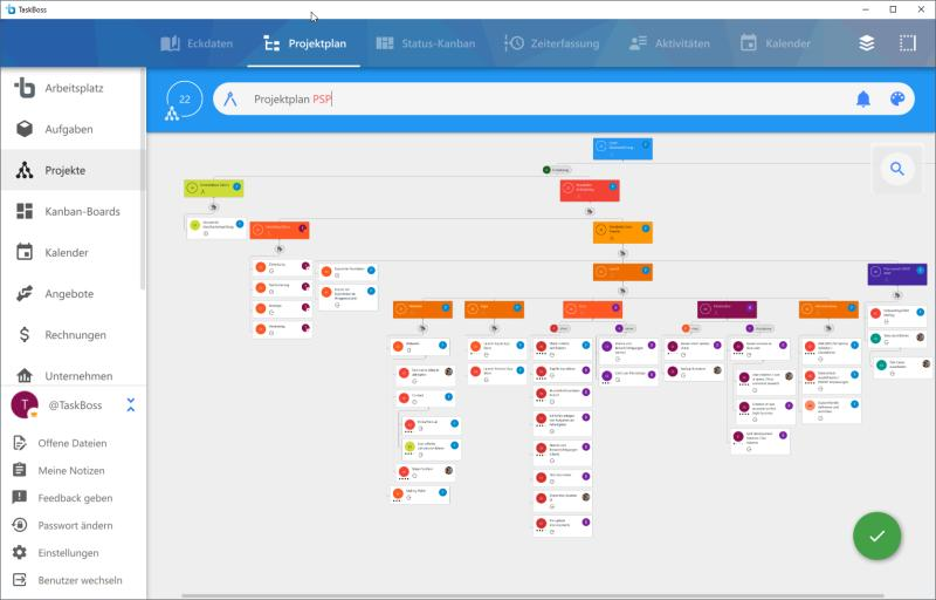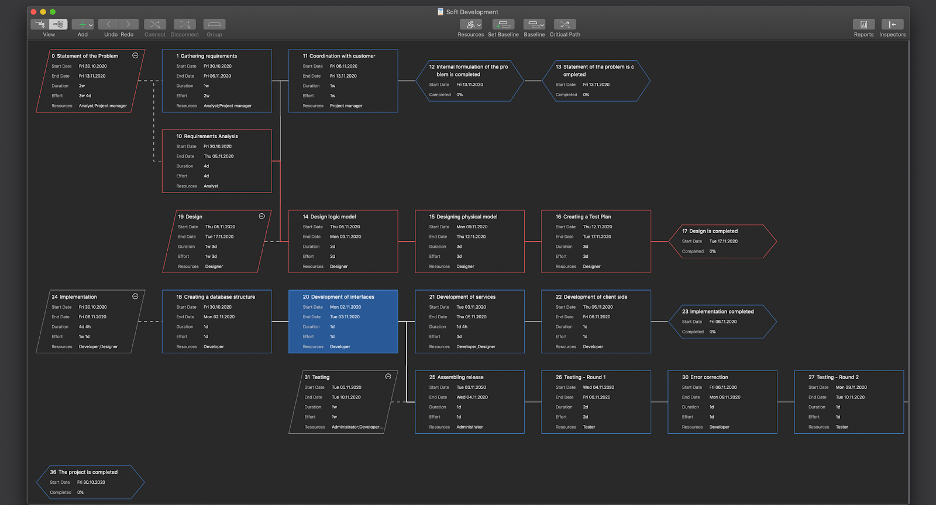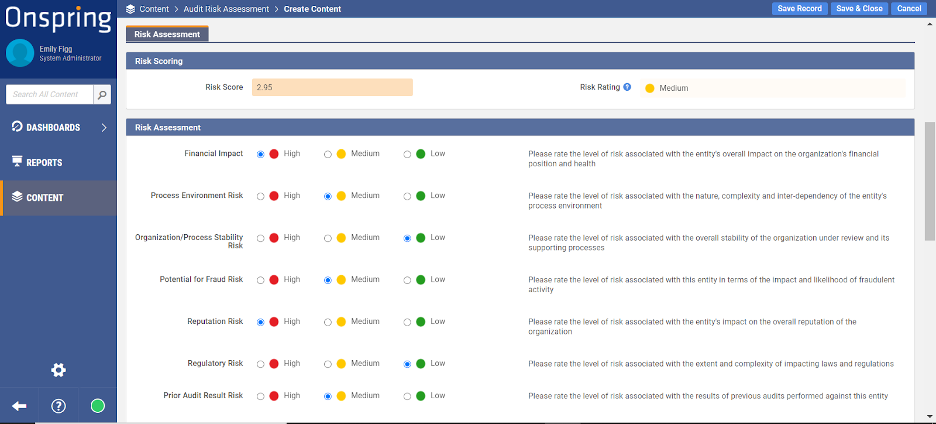Project Management 101: Terms and Techniques to Get You Started
If you have natural leadership skills, are detail-oriented, and thrive on clear expectations, you might find yourself moving into managing projects for your team—if you haven’t already. However, if you don’t have any formal project management training, you might start to feel overwhelmed by the new responsibility. But not to worry. We’ve got you covered.
In this project management guide, we’ll discuss common project management terms, go over a few tools for juggling multiple tasks, and provide techniques to help you during each step of a project. If you’re also planning to launch a content marketing strategy, we’ll explore options for you here as well. It’s time for some project management 101—we'll show how it's done.
What is project management?
Project management is a diverse, dynamic field that significantly impacts organizations and their stakeholders. But the flexible, wide-ranging scope that makes new projects exciting can create confusion.
The project team: roles & structure
Project management is not just about implementing new software, but also an opportunity for cross-functional communication with organizational stakeholders. This means effective project managers engage in conversations throughout the entire customer journey and all areas of your business--including C-level executives and marketing/sales departments!
Let's take a look at the players involved in project management:
Project manager: the sole person given the authority to manage a project.
They are responsible for defining the processes used to manage people, tasks, and delivery at every project stage, from planning to closing. The project manager is responsible for keeping the entire team updated on what's happening with their projects by effectively communicating, organizing workflows, and managing tasks.
2. Project owner: the individual or organization with a vested interest in the project.
The project owner is typically the sponsor, client, or customer who has asked for the project to be completed. They are responsible for providing the resources necessary to complete the project and are the final decision-makers regarding changes or problems.
3. Project team: the group of individuals assigned to work on a project.
The project team is responsible for completing the work assigned to them by the project manager. They typically consist of subject matter experts, like designers, developers, and testers.
4. Project stakeholder: any individual or organization with a legitimate interest in the project.
Stakeholders can be internal (employees of the company) or external (customers, suppliers, etc.). They are typically involved in the project and have a say in its outcome.
Further reading on creating your project team:
4 Project Management KPIs Important For Performance Management
The New Art of Building High-Performing Teams [1]: Seven characteristics that distinguish high-performing teams in today’s working environment.
Project management 101: documentation
Good project managers are detail-oriented and pay attention to everything that goes into their projects. There is a lot to be done, from task management, resource management, scheduling, and workflow management. To keep up, they create documentation for each one, from the goal or purpose to all benchmarks and how successful they were at achieving them.
Project plan
The project plan is the most critical document in any successful endeavor. It defines your goals, timeline and budget while considering all those pesky high-level requirements that need to be met. It formalizes who will lead each part together with their roles in the team, so there are no conflicts or problems downline.
Project scope
The scope can refer to either product or project scope. It is essential you know the difference:
Product scope is all the functions and features that characterize a product or service together.
The project's scope covers all the work required to produce a product that meets the requirements set out in the product scope (required functions and features).
Project requirements
Requirements are the blueprint of what your product or service should look like and how it performs. They're usually written in formal language with detailed explanations for each requirement, which tells engineers exactly where they need to start making changes.
Change orders
It is vital to close the loop on changes to ensure the success of the project. Once approved by management, all requested alterations must undergo an official change order process before being implemented. This process ensures that all suggested updates are appropriately vetted and discussed with stakeholders before any decisions are made.
Status reports
The status report is the perfect way to stay honest with yourself, your project team and key stakeholders about what is happening. This report allows for real-time updates, so there are no surprises in the next rounds of updates or decisions - this will lead to more efficient workflows.
Further reading on creating your status reports:
Project management tools
Project management tools help project managers and teams deliver projects from start to finish.
Let’s look at the most basic (as this is only a 101 guide) project management planning tools and show how they function within project management software programs.
Gantt Chart
A Gantt chart is simply an efficient way to visually represent your project's schedule. It offers project managers an overview of all tasks, relationships, and progress against deadlines or milestones.

Screenshot of a Gantt chart in TeamGantt (Source)
Work breakdown structure (WBS)
A work breakdown structure or WBS is a hierarchical chart that outlines significant project deliverables and then breaks those down into smaller, more manageable tasks. Complex projects can use this to determine when requirements are needed and identify critical paths to meet deadlines.

Screenshot of a WBS in TASKBOSS (Source)
Critical path
The critical path for a project is the sequence and timing of tasks that must be completed to complete the project on schedule. A task belongs on the critical path when, for example, a one-day delay for that task would cause a one-day delay for the entire project. The critical path will be the longest time needed for the project work to be completed.

Screenshot of a project Critical Path in Project Office (Source)
Risk register
Every project has potential events that, if they occur, would have a negative impact on at least one project objective. As the project manager, you should track each risk event in a risk register, including the action needed to reduce or correct the risk, and its status.

Screenshot of the risk assessment register in Onspring (Source)
Further reading on risk management:
Popular project management methodologies
The following section defines standard methods of IT project management designed for software development teams. Other industries, such as construction, may not benefit from the iterative building approach used in these methodologies.
Here’s a quick overview of the most commonly used project management methods.
Agile
Agile is an adaptive, flexible methodology for gathering project requirements, execution, and delivery, typically used for software projects with short bursts of work called Sprints. You’ll start the project with high-level requirements, but not every detail will be worked out before the team begins work. Instead, the team will focus on blocks of work, show them to the project sponsor, and then either make changes or move on to the next work block.
It has been used for non-software products, motor vehicles, medical devices, food, clothing, events, music and more. It is also used in projects that require a more responsive and fast-moving production schedule, such as marketing.
Scrum
Scrum is an Agile teamwork methodology that delivers iterative, incremental work segments and is typically used for software product development. The term Scrum comes from the game of rugby, where the team leader, the Scrum Master, enables the Scrum team to work quickly and make decisions on their own.
The Scrum methodology has been used predominantly in software development, but proponents note that it's applicable across any industry or business. Retail logistics is just one example of how this process can be applied - there are many others!
Other project management methodologies to consider:
PMI/PMBOK
Critical Path Method
Kanban Methodology
Lean Methodology
Six Sigma
How to find the right project management software
If you read this 101 article, the odds are that an enterprise project management system is not what interests you. But don’t worry! We'll help even the smallest teams find their perfect software with our comprehensive guide for beginners like yourself.
Recommended next steps
Check out thousands of user reviews on the top project management tools in our annual FrontRunners report.
Read our Project Management Buyers Guide.
Call our software advice experts at (844) 680-2046 for a free consultation.